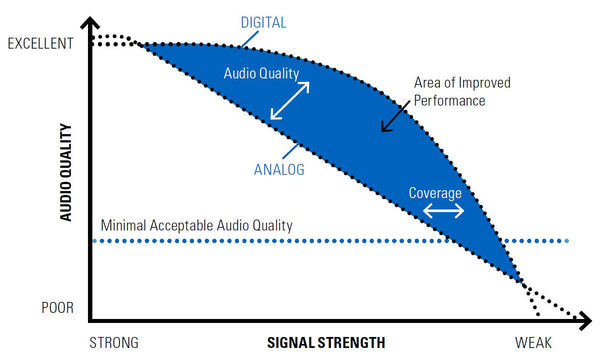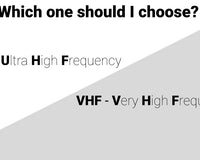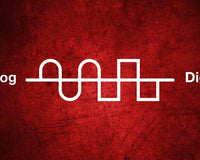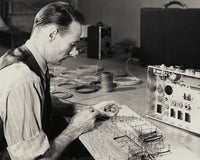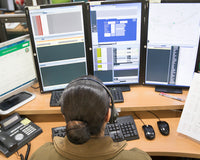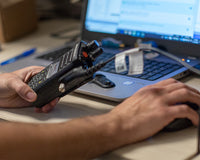Is it really worth the cost and hassle to migrate from analog to digital?
The short answer is, yes. The vast majority of industries would see a noticeable improvement in day to day operations by making the swap to digital two-way radios.
Licensed, professional two-way radios have revolutionized communications for decades and continue to empower millions of people today. From schools to seaports, construction sites to convention halls, they are synonymous with reliability, durability and convenience.
Now professional radio is making a big leap forward - the move from analog to digital. Regulatory pressures and real-world needs are driving greater spectrum efficiency. Some legislators are even mandating that no new designs of two-way radios can be certified unless they have digital capability. This means that practically everyone in the future will use digital.
In this article we will cover 7 main reasons why, in 2020, it makes sense to invest in digital radio technology.
1) Better RF coverage in both simplex and trunked radio operations
Your voice stays strong and clear with an increase of 25 - 40% coverage compared to an analog radio system. This is done by converting your voice into simplified computer language that can be transmitted more efficiently over greater distances. At the far edge of coverage, even though signal strength is similar, digital voice will be clear and intelligible while analog voice will be garbled and masked by static.
2) Better battery life, up to 40% longer run times
While both analog and digital radios consume about the same power in standby mode, once you start transmitting, digital radios are drastically more efficient. This is critical for frequent and heavy users who depend on their radios to last the entire shift and can’t stop to replace batteries or recharge radios.
3) Clear static free audio
Digital radios are able to separate a user’s voice from the background noise to ensure your critical communications come across clearly. Radio interference creates static on an analog radio and makes the conversation less intelligible. Because a digital radio has automatic error correction, it rebuilds voice sounds and maintains the clarity of the voice, even if a signal is badly corrupted.
4) Double your capacity without adding frequencies
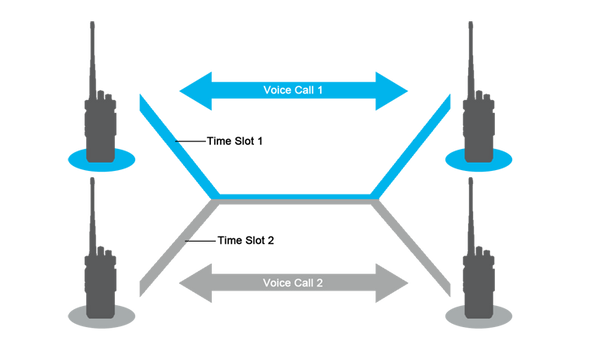
With digital, you can immediately double the capacity of your existing 12.5 kHz channel and enable many more people to communicate without worrying about privacy or interference. Motorola digital radios are able to create two separate “channels” in one 12.5 kHz space which creates room for expansion without costly licensing adjustments.
5) Radio specific identification
Many two-way radio users are working in mission critical environments where time and information are key. With digital radios, you can assign each radio with an alias and an ID #. You can use this information to make specific radio-radio only calls as well as relaying key personnel information in the case of an emergency via a dedicated button.
6) Backwards compatibility
95% of our digital radios have the ability to do analog as well (on designated channels). This enables companies to spread their migration costs out while still maintaining the ability to use current equipment. There are many paths that can be taken to ensure day-to-day operations are not impacted as you complete your move.
7) Advanced technology with secure transmissions
When you purchase a digital radio, you gain access to a number of advanced radio only and system wide administrator options. High level radios can receive programming updates via WiFi as well as being tracked via built-in GPS. Digital offers end-to-end AES 256 encryption to keep your sensitive communications secure.


